I believe it was Trond who mentioned (and showed pictures) of this plant in its early stage in his own garden...looked similar to what was in my garden. This second year for it I had almost given up hope of seeing it again. However, in the spot, 4 tiny umbrellas have suddenly appeared. Am wondering if Trond is seeing them as well. Fran
Frances Howey
London, Ontario, Canada
Zone 5b
Comments
Re: Saussurea
No worries! Very interesting! I'd love to know what Saussurea you are growing.
(NB. I have changed the subject of this thread.)
Re: Saussurea
Hi Lori: The seed was labelled Saussurea nepalense. Fran
Frances Howey
London, Ontario, Canada
Zone 5b
Re: Saussurea
I grew that one but not a single seedling wintered over... must try again. Here is what I had as Saussurea nepalensis as a seedling - I'd love to see how they look in their maturity in garden conditions (or at least older than my fleeting experiments!)
I have had a couple(?) of Saussurea spp. overwinter in the tufa garden though... must figure out which they are - more favourable conditions there, I guess.
P.S. The mention of "umbrellas" puts me in mind of Syneilesis as they emerge from the ground, which I am keenly watching out for!
Re: Saussurea
I have a couple/several spp of S seedlings from last year-- and I was surprised to see some leaves in the pots (small seed pots sunk in ground for winter, since the rock garden is still in progress..or will be in progress if/when we get conditions where I can dig..), since the seedlings were so tiny after a whole season's growth I didn't expect much!
I have a couple pics of the microscopic leaves to process, and will check labels to see what has survived...
OK, the ones I took pics of the other day, after a quick glance at the labels, it seems there are leaves on
Saussurea aff superba
and Saussurea cf leontodontoides
without checking records, both are from Holubec, and both Himalayan spp
Re: Saussurea
Hello Frances
If I have shown pictures of Saussurea it has to be S alpina which grows at my mountain cabin. But I think that Lori has posted some other Saussurea pictures ;D
Picture from last year.
Re: Saussurea
Hello Frances
If I have shown pictures of Saussurea it has to be S alpina which grows at my mountain cabin. But I think that Lori has posted some other Saussurea pictures ;D
Picture from last year.
I think I like every species, though the really crazy ones are most fun ;D
Re: Saussurea
I've tried them several times from seed with no luck. This year I finally got 7 seedlings of S. pygmaea...now the challenge of keeping them alive.
Re: Saussurea
I had a half dozen species from Holubec, and got germination on most, though not on a couple... long term care is another issue :)
Re: Saussurea
I had Saussurea eopygmaea survive, from seed last year.
It looks like it may be reasonably interesting some day (if it continues to survive!)
http://www.efloras.org/gallery_image.aspx?flora_id=960&gallery_id=1064&i...
No sign (yet?) of S. stella, also from seed last year.
Re: Saussurea
Looks healthy :) the tiny silver leaves on S cf leontodontoides above are getting a tiny bit bigger, so I am hopeful...
Re: Saussurea
So, what I am now growing this year as Saussurea nepalensis (first photo below) bears no resemblance at all to what I grew a few years ago (second photo, below)! This is actually sort of encouraging, since the current plant looks much more like the available photos in a google search (Edit: hmm, not sure about that now). Perhaps it has a better chance of survival - not a single one of what I grew earlier actually wintered-over (and I do wonder what heck it actually was?!?)
Do yours look like the first photo, Frances?
Here is this year's seedlings of locally-collected Saussurea nuda ssp. densa, starting to look a bit like their wild counterparts: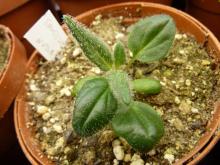
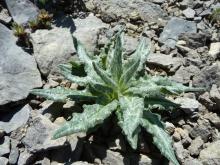
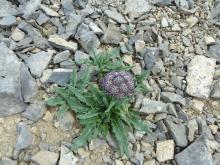
Re: Saussurea
Looking good, Lori! I'm quite fascinated by this genus along with other odd Asteraceae ;D I'm nervously watching for re-emergence of a couple I planted in the ground last fall-- they'd survived outdoors in sunk pots the year before... and I have seed of a couple more to sow...
Re: Saussurea
Lori, i think your mystery nepalense might be a Leibnitzia. I have two Saussurea coming along as seedlings...nepalense and a N. spp. from Goteborg BG. S. pygmaea from last year show no signs yet.
Re: Saussurea
You must mean this year's, Todd? Yes, it does look rather like Leibnitzia anandria, comparing to my photos. More Leibnitzia is about the last thing I need :rolleyes:; I guess time will tell.
So does your S. nepalensis looks like the one I grew before... ? Could you post a photo, please?
Re: Saussurea
I'll try to get a pic in the next day or so. S. pygmaea survived the winter in the cold-frame and is showing the first leaves. I'll plant it out next month and cross my fingers.
Re: Saussurea
Something that seems unlike Leibnitzia anandria though, is the black stipples on the leaves of the S. "nepalensis" seedlings I'm growing. At least I don't remember black stipples on Leibnitzia leaves... ?
(NB. The valid species name is Saussurea nepalensis, as opposed to S. nepalense).
Re: Saussurea
The nepalensis are only in their seed leaves stage yet...I'll have to wait until true leaves appear.
Edit: Correcting species name.
Re: Saussurea
Amazingly, given our cool weather, I finally noticed some small hints of growth on a couple of plants-- these are tiny things just planted out in the fall, though it was their second winter outside, first was in sunk pots..
One was this Saussurea cf leontodontoides (from Holubec, I haven't found a picture of it as he found it). Interestingly, the real leontodontoides seems to be mostly green, tomentose only below, these so far are fully tomentose- all the better! Notice the black dead leaf from last year.. these new leaves are still tiny, less than an inch so far, the plant itself is supposed to be small anyway...
I've planted several of these in a couple of places- these ones are in my semp bed in front of the house, which has fairly mineral soil (clay and gravel mostly) the others are in what I hope to be a moister, richer soil bed (still rocky and sharply sloped) so I will see which site they prefer!
None of the other Saussureas are showing anything yet..
Re: Saussurea
Lori - apologies for not getting back sooner. What I had growing as Saussurea nepalensis last year was the same as your second picture. No sign of it this year but when those Sinelesis (which there is now no doubt that that is what they are) began popping up in that spot, I thought they were the Saussurea I had planted. Strange that they are "popping up" all over the garden now quite distant from where I had planted Sinelesis originally - don't you think that is odd? I loved your pictures of the "real" Saussurea. Wonder why it didn't survive in my garden - perhaps it was because "winter" was interrupted this year (little snow cover) - I believe its native habitat is in the mountains (Himalayas). Fran
Frances Howey
London, Ontario, Canada
Zone 5b
Re: Saussurea
Frances, with Syneilesis, I always think of "little umbrellas" - such an apt description! I suppose your plants may have have seeded around? (Mine still aren't old enough to even bloom yet!) It sounds like lots of people on this forum are growing it - has anyone observed it seeding around excessively?
Just thought of something... Podophyllum peltatum looks somewhat similar to me when emerging (though not hairy like Syneilesis), and Todd mentioned in another thread that he finds it to be overly spreading in his conditions. I wonder if that could be what's popping up all over?
Re: Saussurea
Interesting how varied the leaves seem to be in this genus!
Here is S aff superba from Holubec, still just teeny tiny leaves emerging (you can see last year's larger dried leaves, and I doubt those were full size..)
Re: Saussurea
Here is another, slower to emerge than the other couple I have, this is almost a week ago- interesting only this one plant emerged this colour, same sp in another spot emerged green, which they all are now..
I think this is S nidularis.. still tiny, but not showing signs of looking the way the jansalpines shows them, though I could imagine them looking more like this:
http://baike.soso.com/v9977759.htm
hopefully I'll see in a year or so!
Re: Saussurea
Shots from thurs morning, Oct 04, heavy frost, -5 to -9; amazingly, virtually all plants on the property look the same after those couple of cold nights as they did before (we'd had freezing temps earlier, but that was the coldest)..
1-3 Saussurea aff leontodontoides
4 Saussurea aff superba
5,6 Saussurea nidularis
Re: Saussurea
Good looking Saussurea species there Cohan, even when frosted. Judging from their size, they may bloom next year, then you'll have to show us.
Re: Saussurea
I'm hoping so! I'm a little worried now, since I lost one rosette some time ago on S aff superba- I figured I had damaged the stem while rooting out a dandelion; well, now another seems to be fading- they go very slowly, centre leaves okay still, losing outer leaves; I'd think it was just the season, except it is the same pattern the other rosette followed, and a couple others are still losing no leaves.. not much I can do at this time of year, will have to see how they are in spring .. fingers crossed...
I also have seedlings in ground from this spring of S nepalensis and S riederi.. have to see if they overwinter yet..
Re: Saussurea
Seems Saussurea is a favorite genus, Cohan! Hope they all survive. Nice rockery too with those pebbles.
Re: Saussurea
Thanks, Trond- funny thing is, I was originally interested in the genus for the species with elaborate bracts around the inflorescences, some very exotic looking plants! I ordered some seed from Holubec a couple of years ago, and he sent me several extra species as bonus, and got plants of ( I think) 3 out of 6 species- so I don't have any of those crazy bract species..lol.. but still like them all- I'm finding unusual Asteraceae in general interesting..
Re: Saussurea
I wonder if this thread would not be better in the family/genus section so that it would be easier for new people to find?
Okay, the last two species I grow, both from seeds this spring (2012) and planted out late summer; so we have to see if they make it through the winter..
Saussurea nepalensis these were very vigorous seedlings, and must have been very high germination- the pot was packed full, and as seed pots were in part sun, leaves stretched out.. I think it will be more compact in ground.. I have them in a couple of beds in different spots to test them..
Saussurea riederi from the little I can find on this, unlike the low growing Himalayan alpine species, this plant should have a bit taller leafy stems, coming from sub/alpine? meadows in Japan etc; so I planted it with other sub/alpine meadow plants (presumed to be a bit tall for the rock garden) in a berm which has a mix of clayey soil/topsoil and partly decomposed sod, with some gravel in the top 6 inches or so; despite those expectations of height, though, these seedlings are smaller and slower growing so far than the nepalensis...


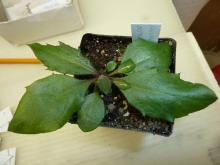
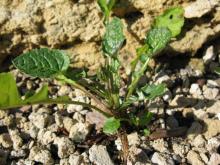
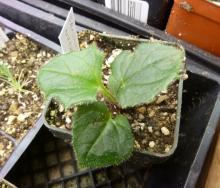
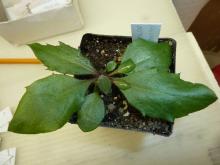
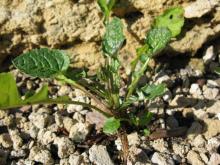
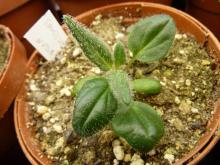
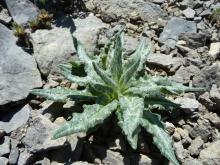

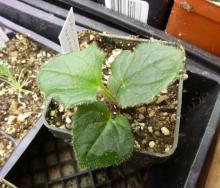
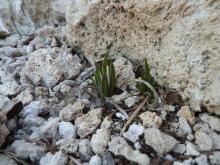
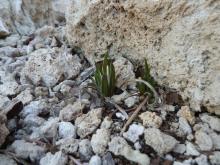
My apologies. Just had a look at the label and this plant is Saussurea - not Nassauvia. Fran
Frances Howey
London, Ontario, Canada
Zone 5b